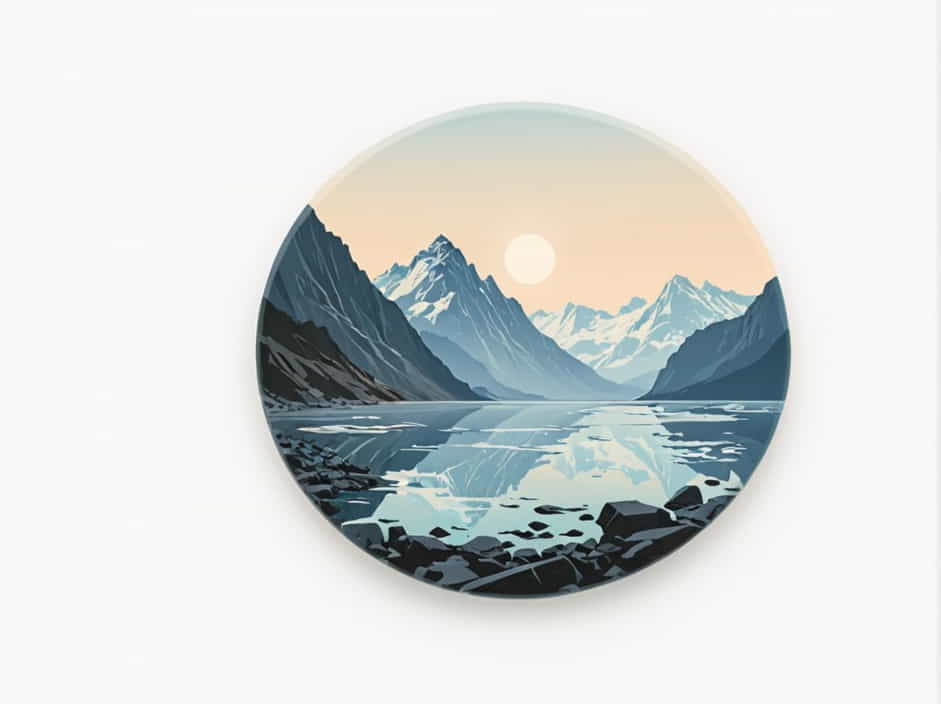La Mer de Glace (The Sea of Ice) is one of the most well-known glaciers in the French Alps, located near Mont Blanc. However, when discussing this title in the context of Caspar David Friedrich, it often leads to an association with his iconic painting ‘The Sea of Ice’ (1823-1824). This artwork, also known as ‘The Wreck of Hope,’ is a striking representation of a frozen landscape, depicting shattered ice in a dramatic and almost surreal manner.
This content explores the historical and artistic connections between Friedrichs painting and La Mer de Glace, examining the influence of Romanticism, nature, and symbolism in his work.
Who Was Caspar David Friedrich?
Caspar David Friedrich (1774-1840) was a German Romantic painter known for his dramatic and emotional landscapes. His works often depicted solitary figures, vast natural scenes, and an exploration of the sublime the overwhelming power of nature.
His paintings frequently featured:
- Ruins, fog, and frozen landscapes
- Themes of solitude, reflection, and spirituality
- Dramatic contrasts between light and dark
Friedrichs ‘The Sea of Ice’ is one of his most striking works, showing an unforgiving frozen sea crushing a shipwreck. While the painting does not depict La Mer de Glace specifically, its visual style aligns with the dramatic nature of this glacier in the French Alps.
La Mer de Glace: Frances Iconic Glacier
La Mer de Glace, or ‘The Sea of Ice,’ is one of the largest glaciers in France, located on the northern slopes of Mont Blanc. It extends approximately 7 kilometers and is a major attraction for tourists and climbers.
Key Features of La Mer de Glace:
? Length Around 7 km, making it the longest glacier in France.
? Formation Created by the slow movement of ice over centuries.
? Tourist Attraction Features the Montenvers Railway and Ice Cave.
? Climate Change Impact The glacier has been shrinking over the past century.
Although Friedrich likely never saw La Mer de Glace in person, the glaciers rugged, jagged ice formations resemble the chaotic landscape he depicted in ‘The Sea of Ice.’
The Sea of Ice (1823-1824): Friedrichs Frozen Masterpiece
Caspar David Friedrichs ‘The Sea of Ice’ is a powerful depiction of destruction and natures dominance over human ambition.
Key Elements of the Painting:
- Jagged Ice Blocks Representing the harshness of nature.
- A Crushed Ship Symbolizing the failure of human exploration.
- Muted, Cold Tones Creating a sense of isolation and despair.
This painting was originally titled ‘The Wreck of Hope,’ referring to an Arctic expedition gone wrong. The chaotic arrangement of ice mirrors La Mer de Glaces rugged terrain, showing natures raw and untamed force.
Similarities Between ‘The Sea of Ice’ and La Mer de Glace
| Feature | The Sea of Ice (Friedrich) | La Mer de Glace (Mont Blanc) |
|---|---|---|
| Jagged Ice Formations | Yes | Yes |
| Remote and Isolated | Yes | Yes |
| Human Struggles Against Nature | Symbolized by the shipwreck | Represented by climate change impact |
| Cold, Harsh Environment | Yes | Yes |
While Friedrichs painting was based on Nordic ice landscapes, its visual similarities to La Mer de Glace highlight the timeless and universal nature of frozen environments in Romantic art.
Romanticism and the Power of Nature
Caspar David Friedrich was one of the leading figures of Romanticism, an artistic movement that emphasized emotion, nature, and the sublime.
How Romanticism Influences ‘The Sea of Ice’
- Sublime Landscapes The painting evokes awe and fear, showing natures overwhelming power.
- Human Vulnerability The crushed ship symbolizes human weakness against natural forces.
- Symbolism The frozen wasteland represents despair, mortality, and times passage.
The same themes apply to La Mer de Glace, which has long fascinated travelers and artists with its dramatic and unpredictable beauty.
Climate Change and the Disappearing Glaciers
One key difference between Friedrichs frozen world and La Mer de Glace today is the impact of climate change.
Glacier Retreat Over Time
- 1850s The glacier extended much farther down the valley.
- 1900s Noticeable retreat due to warming temperatures.
- 2000s-Present Significant ice loss, revealing more exposed rock.
The once mighty ‘Sea of Ice’ is shrinking, which contrasts with Friedrichs eternal frozen landscapes. If he were alive today, he might paint a very different scene one depicting melting ice, barren landscapes, and the fragility of nature.
The Lasting Influence of Friedrichs Vision
Caspar David Friedrichs ‘The Sea of Ice’ remains an important work of art, inspiring:
? Modern Landscape Painters His dramatic use of ice and light influences contemporary artists.
? Environmental Awareness His work reminds us of natures power and our need to protect it.
? Romantic Ideals His landscapes continue to evoke deep emotions in viewers.
While La Mer de Glace and ‘The Sea of Ice’ are separated by geography and time, they share a common spirit a reminder of natures vast, untamed beauty and the smallness of human existence.
A Timeless Connection
Although Caspar David Friedrichs ‘The Sea of Ice’ was not directly based on La Mer de Glace, both depict the same themes of isolation, power, and the struggle between man and nature.
Friedrichs painting remains one of the most striking representations of frozen landscapes in art history, while La Mer de Glace stands as a real-world example of natures ever-changing power.
As climate change continues to reshape glaciers worldwide, Friedrichs vision becomes even more relevant a reminder of natures beauty, fragility, and dominance.
